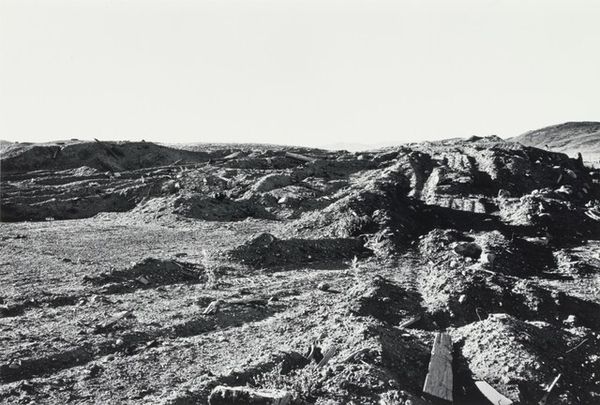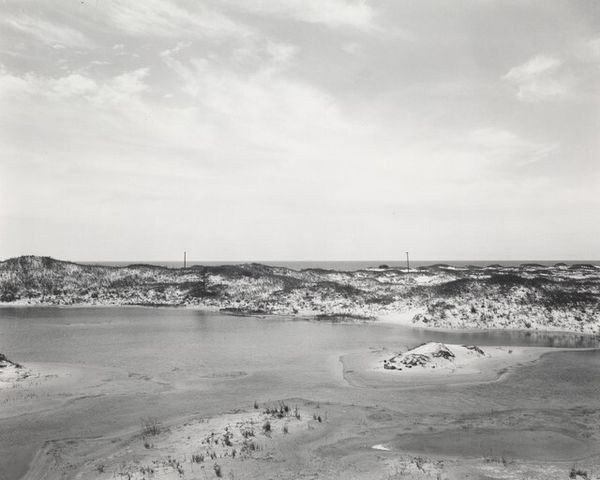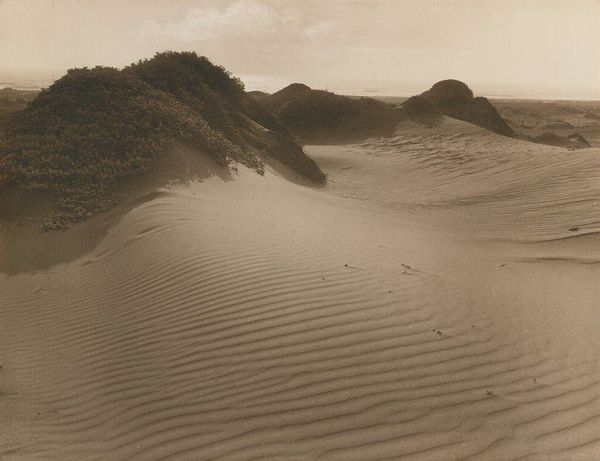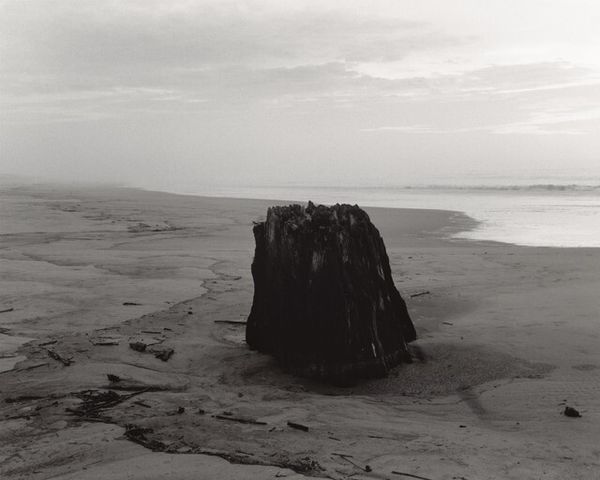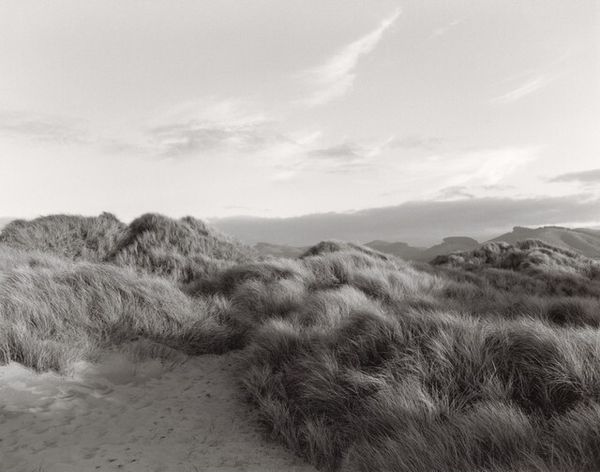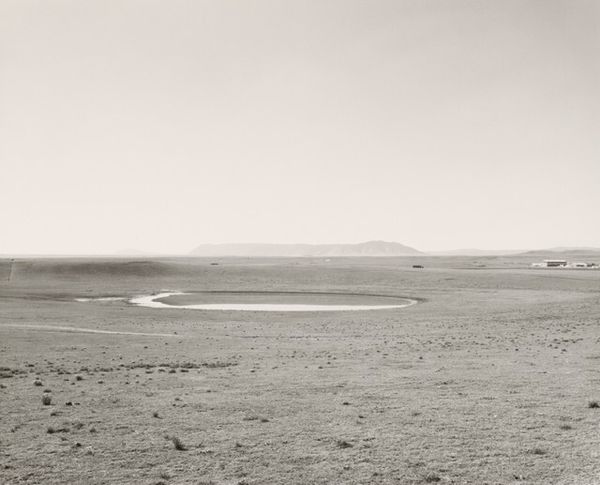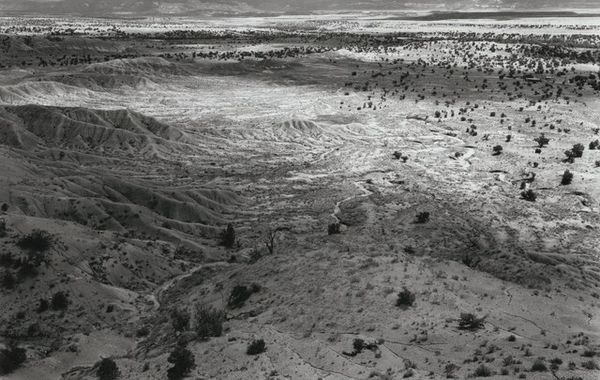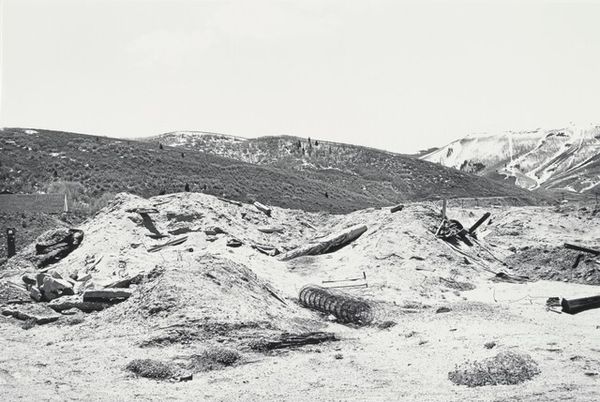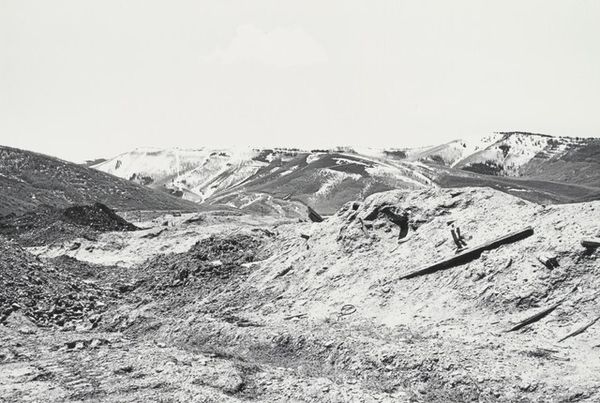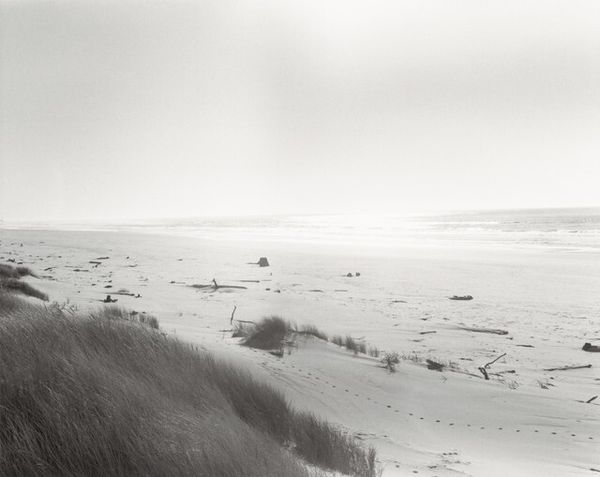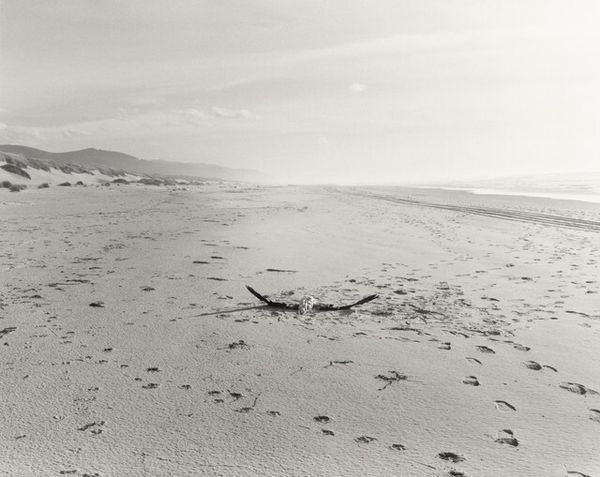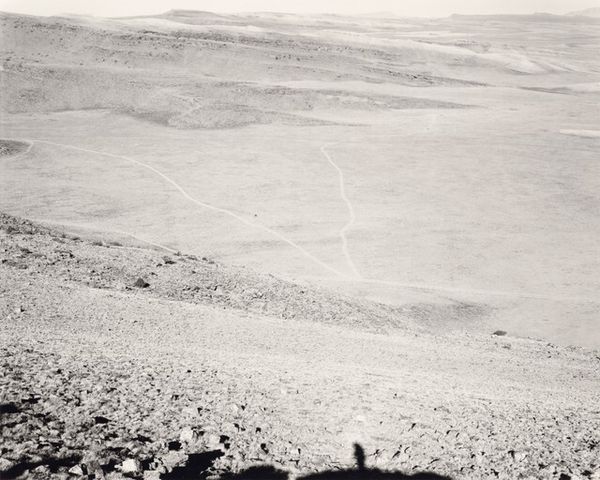
photography, gelatin-silver-print
#
conceptual-art
#
black and white photography
#
landscape
#
photography
#
sky photography
#
gelatin-silver-print
#
monochrome photography
#
realism
#
monochrome
Dimensions: image: 38.7 × 48.5 cm (15 1/4 × 19 1/8 in.) sheet: 39.8 × 49.5 cm (15 11/16 × 19 1/2 in.)
Copyright: National Gallery of Art: CC0 1.0
Curator: Let's consider William Clift’s “Desert Form #1, New Mexico, 1984," a gelatin silver print. What's your initial impression? Editor: Stark. And grainy, almost textural. You feel the weight of those rocks, that bleached sky… it speaks of isolation. I’m drawn to the layering of textures; how the sharp, coarse rocks lead into the flat plain in the background. Curator: It’s a very controlled vista. Clift's focus on the American Southwest mirrors a long tradition, connecting it to established narratives around westward expansion and environmental stewardship within photography's development as a tool of cultural representation. Editor: Absolutely, but how did he manipulate his medium? Gelatin silver prints offer incredible tonal range, look at how he brings out such detail from those shadowed rocks versus that flat sun bleached horizon. What labor and processes were needed to present that image and fixate the realities he found, how does it affect the viewer’s perspective on that time and place? Curator: It's interesting that you focus on that labor. This photograph presents a carefully considered view. Clift deliberately emphasizes particular natural formations and shadows. Through choice of composition, the image avoids explicit markers of human activity – the political context of land use, extraction, or conservation. It presents a kind of timeless, ahistorical vision. Editor: But that lack of direct representation becomes political, doesn't it? Ignoring how the land is lived on, used, shaped is in itself a statement about its worth – who decides how it’s used, how those decisions are made accessible or hidden, those materials extracted. His deliberate choices of representing an unpopulated scene obscures power structures rooted to materiality that should be at the center. Curator: Perhaps. The picture itself provides a different starting point for debate on aesthetics or broader ecological concerns, without reducing the landscape to purely political territory. Editor: Though a space becomes constructed and framed politically through materiality, its representation, and dissemination for interpretation within an art institution... I’m thinking now of how that final print circulates as a cultural and economic object, imbued with meanings concerning authorship, value, and status. Curator: A fascinating way to examine this desert tableau. I appreciate how you’ve tied it to labor and the inherent material of both the desert itself and the photograph that now represents it. Editor: And I appreciate you placing Clift's work into that greater sociopolitical context. Food for thought!
Comments
No comments
Be the first to comment and join the conversation on the ultimate creative platform.
